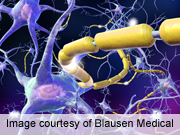
WEDNESDAY, Dec. 12 (HealthDay News) — A gene that’s an indicator of disease progression in most patients with amyotrophic lateral sclerosis (ALS) has been identified by researchers.
ALS, also known as Lou Gehrig’s disease, is a neurodegenerative disease that slowly causes paralysis and death. It affects about five in 100,000 people and there is no known cure.
The researchers at the Methodist Hospital in Houston found that the debilitating symptoms of ALS appear to be increased by a lack of inflammation-reducing T cells. Specifically, they discovered that expression of the gene FoxP3 — which helps control the production of anti-inflammatory T cells — was an indicator of disease progression in 80 percent of the ALS patients they studied.
Low FoxP3 levels were likely in patients whose ALS progressed rapidly, while higher FoxP3 levels were associated with slower disease progression, according to the study published online recently in the EMBO Molecular Medicine Journal.
“This is the first demonstration that regulatory T cells may be slowing disease progression, since low FoxP3 indicates a rapidly progressing disease,” lead author Jenny Henkel, an assistant professor of neurology, said in a hospital news release. “Levels of FoxP3 may now be used as a prognostic indicator of future disease progression and survival.”
The link between inflammation and ALS progression is well established, and many genes associated with the disease have been identified, according to the news release.
“While inflammation exacerbates [worsens] disease in ALS patients, this inflammation is suppressed in some patients,” Henkel said. “The data in our article suggest that regulatory T cells can suppress this inflammation.”
She said researchers are closing in on specific targets for modifying the inflammation that drives ALS progression, and that they are also getting closer to developing new treatments for the disease.
More information
The U.S. National Institute of Neurological Disorders and Stroke has more about amyotrophic lateral sclerosis.

